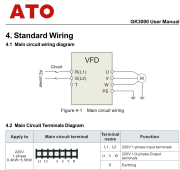Jack Rabbit Off Grid
Solar Enthusiast
- Joined
- Sep 6, 2021
- Messages
- 477
I have searched the forum and the net but don’t understand what I need.
I have a Magnum MS4448PAE with 600ah of LifePO4 batteries. I’m powering a small 1 bedroom manufactured home that they handle no problem. But I have a Red lion 1/2hp 230v shallow well pump hooked to a 500 gallon cistern tank. Every time it cycles on the whole house flickers and the tv turns off. I know I need a soft start of some sort but don’t know which one? Everything I find says they are for A/C units not well pumps. The pump specs are 11.8 amps at 120v or 5.9 amps at 230v. I currently have it wired 230v.
Thank you in advance for any suggestions.
I have a Magnum MS4448PAE with 600ah of LifePO4 batteries. I’m powering a small 1 bedroom manufactured home that they handle no problem. But I have a Red lion 1/2hp 230v shallow well pump hooked to a 500 gallon cistern tank. Every time it cycles on the whole house flickers and the tv turns off. I know I need a soft start of some sort but don’t know which one? Everything I find says they are for A/C units not well pumps. The pump specs are 11.8 amps at 120v or 5.9 amps at 230v. I currently have it wired 230v.
Thank you in advance for any suggestions.



